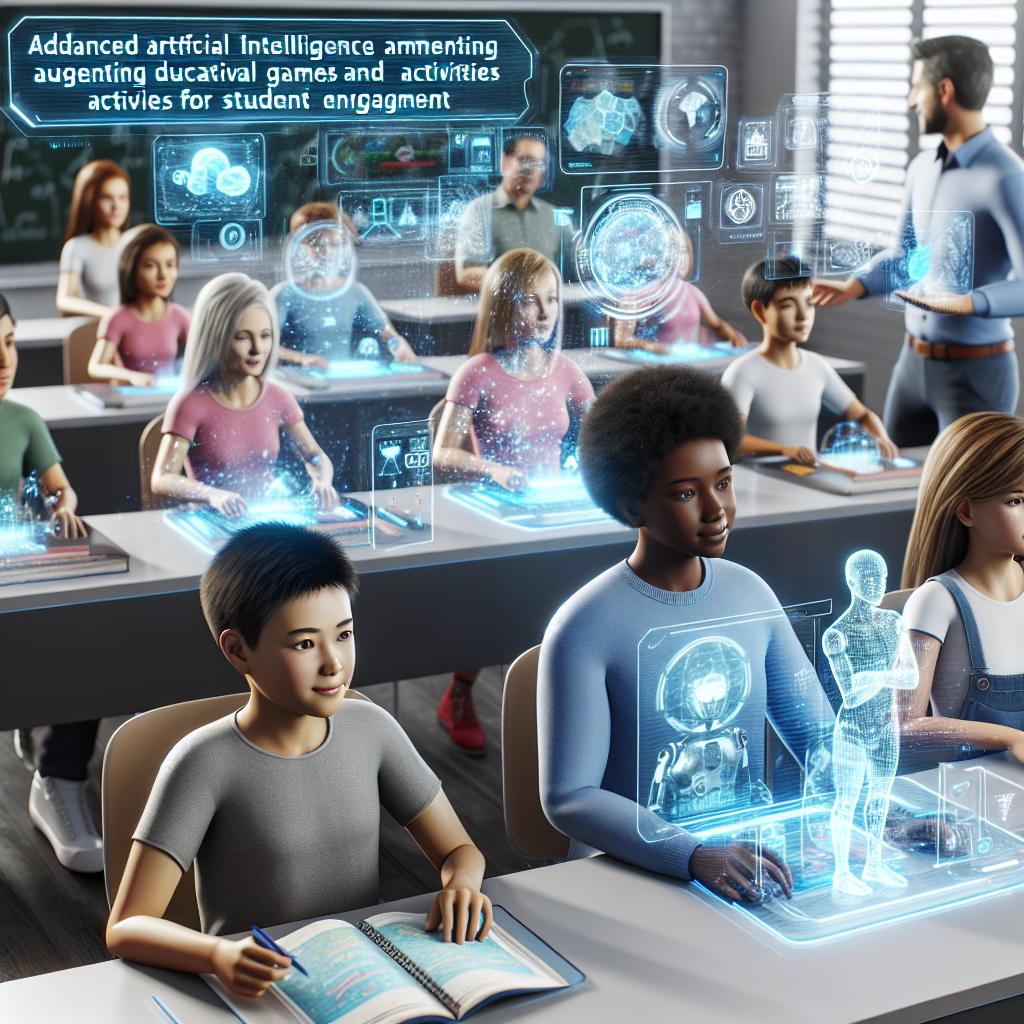Enhancing Student Engagement with AI-Powered Learning Games and Activities
In today’s digital age, technology is rapidly transforming the way students learn and engage with educational content. One of the most exciting advancements in this area is the use of artificial intelligence (AI) to create interactive learning games and activities that not only make learning fun and engaging but also help students master complex concepts more effectively.
AI-powered learning games and activities leverage the power of machine learning algorithms to adapt to each student’s individual learning style, pace, and level of understanding. This personalized approach not only keeps students motivated and engaged but also ensures that they receive targeted feedback and support to help them succeed.
Benefits of AI-Powered Learning Games and Activities
There are several benefits to incorporating AI-powered learning games and activities into the classroom:
1. Personalized Learning: AI algorithms can analyze students’ performance data in real-time and tailor the content and difficulty level of the games to match their individual needs. This personalized approach helps students stay engaged and motivated, as they are constantly challenged at the right level.
2. Immediate Feedback: AI-powered learning games provide instant feedback on students’ performance, allowing them to identify and correct mistakes in real-time. This immediate feedback loop helps students learn more efficiently and retain information better.
3. Adaptive Learning Paths: AI algorithms can identify areas where students are struggling and provide additional practice or support in those areas. By adapting the learning path to each student’s needs, AI-powered learning games can help students master difficult concepts and build a strong foundation of knowledge.
4. Gamification: By incorporating game elements such as points, levels, rewards, and competition, AI-powered learning games make learning more engaging and enjoyable for students. This gamified approach motivates students to actively participate and invest more time and effort in their learning.
5. Accessibility: AI-powered learning games can be accessed anytime, anywhere, making it convenient for students to engage with educational content outside of the classroom. This accessibility ensures that students have the flexibility to learn at their own pace and on their own schedule.
Examples of AI-Powered Learning Games and Activities
There are a variety of AI-powered learning games and activities available across different subjects and grade levels. Some popular examples include:
1. Duolingo: Duolingo is a language-learning platform that uses AI algorithms to personalize lessons based on students’ progress and proficiency levels. The platform offers interactive games and activities to help students learn languages in a fun and engaging way.
2. Kahoot!: Kahoot! is a game-based learning platform that allows teachers to create interactive quizzes, surveys, and discussions for students. The platform uses AI to analyze students’ responses and provide real-time feedback to help them improve their understanding of the material.
3. Prodigy: Prodigy is a math game that uses AI-powered adaptive learning to create personalized math questions for students. The game adapts to each student’s skill level and provides targeted practice to help them improve their math skills.
4. Brainly: Brainly is a collaborative learning platform where students can ask and answer questions in various subjects. The platform uses AI algorithms to match students with relevant questions and provide instant feedback on their answers.
FAQs
Q: How can AI-powered learning games benefit students with different learning styles?
A: AI-powered learning games can adapt to each student’s individual learning style, pace, and level of understanding. This personalized approach ensures that students receive targeted support and feedback to help them succeed, regardless of their learning preferences.
Q: Are AI-powered learning games suitable for all grade levels?
A: AI-powered learning games can be tailored to suit students of all grade levels, from kindergarten to college. The games can be customized to match the curriculum and learning objectives of each grade level, making them suitable for students of all ages.
Q: How can teachers incorporate AI-powered learning games into their lesson plans?
A: Teachers can integrate AI-powered learning games into their lesson plans by using them as supplemental activities or homework assignments. Teachers can also use the data and insights provided by the games to identify areas where students are struggling and provide additional support in those areas.
Q: Are AI-powered learning games accessible to students with disabilities?
A: Many AI-powered learning games are designed to be accessible to students with disabilities, with features such as audio descriptions, text-to-speech, and customizable settings. These accessibility features ensure that all students can engage with the games and activities and benefit from personalized learning experiences.
In conclusion, AI-powered learning games and activities have the potential to revolutionize the way students learn and engage with educational content. By leveraging the power of artificial intelligence to personalize learning experiences, provide immediate feedback, and adapt to each student’s needs, these games can enhance student engagement and improve learning outcomes. As technology continues to advance, AI-powered learning games will play an increasingly important role in shaping the future of education.

